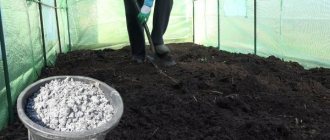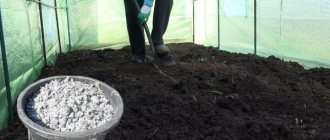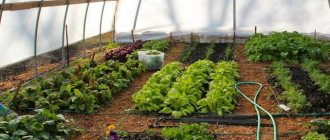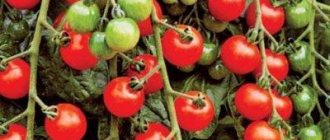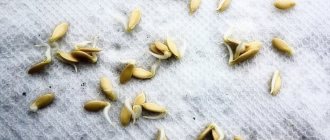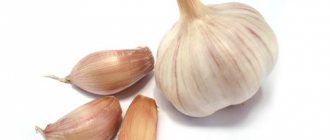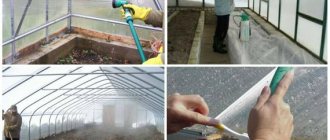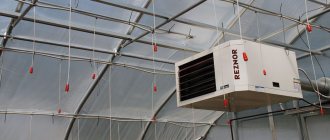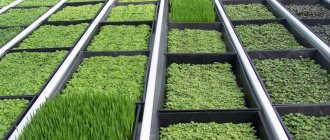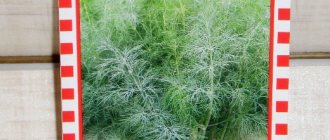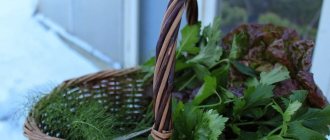Having an equipped greenhouse, you can grow a wide variety of greens all year round - plants, the upper part of which is edible. Parsley, various types of lettuce and onions, and dill grow excellently. These crops are unpretentious and can easily withstand winter if an atmosphere favorable for them is created. Growing greens in a greenhouse is a profitable and practical activity. After all, fresh greenery will be on the gardener’s table all year round, and after reaping a rich harvest, you can think about opening your own business.
Dill and parsley can be grown in a greenhouse all year round
What material to use to build a greenhouse for greenery
Productivity directly depends on the greenhouse in which the crops are grown. Not only the temperature and humidity, the rich composition of the soil, the organization of planting, the frequency of watering, but also the design of the greenhouse itself are important.
Green onions, lettuce, dill and parsley, being unpretentious crops, will grow in any greenhouse. If you plan to grow greenery in a greenhouse for a long time in winter, it is better to initially spend effort and money on building a good greenhouse structure. Wooden is the most ideal option. But such a building will cost the gardener a pretty penny. A more economical and suitable choice is to make a greenhouse from polycarbonate; this material is durable and lasts a long time. In addition, it can reduce heat loss, which means you can use heating sparingly.
A polycarbonate greenhouse is ideal for growing greenery
The structure can be built small or very spacious. It all depends on financial capabilities and the territory allocated for the greenhouse. It is not very convenient to work in a small building. The optimal building height is from 1.5 to 2.5 meters. It is preferable to locate the building on the south side of the site. The greenhouse must be protected from drafts and wind.
Chinese cabbage (Pak choi)
Any varieties of Chinese cabbage produce a harvest very quickly. The kale variety ripens even faster, it is resistant to cold, the seeds are able to germinate at above-zero temperatures within three to four degrees. Stronger plants can withstand average frosts, approximately minus four degrees. The early maturity of cabbage allows you to harvest juicy leaves in 15-25 days, and full rosettes in 1.5 months.
Chinese cabbage is adapted to grow in the shade; planting in a shady area reduces the possibility of its rapid flowering. The most comfortable temperature for growth ranges from 15 to 25 degrees. Pak choi cabbage is sown from 20 to 30 centimeters between each other, and also between furrows from 25 to 35 centimeters. The plant is not whimsical; no special agrotechnical manipulations are necessary with it. It is enough to provide the cabbage with timely watering, perform a couple of fertilizing with mullein solution, or with herbal infusion.
How to equip a greenhouse
Before growing greens in a greenhouse in winter, it must be equipped. What should you pay attention to, especially if you plan to harvest all year round?
Arrangement plan
The interior design of a greenhouse always begins with planning. At this stage, you need to decide on the main components of success:
- Consider heating the entire room, especially along those walls that cannot be heated by sunlight.
- Lack of lighting in winter can affect yields. It is better to install fluorescent lamps so that all plants receive a sufficient portion of lighting.
- Decide how the crops will be planted. These can be ordinary beds or multi-tiered racks.
Which is better - a rack or a bed?
Experienced gardeners recommend organizing the planting area using shelving for greenhouses and greenhouse structures. It is impractical to plant onion, dill, and parsley beds:
- Useful planting area is used uneconomically;
- you will have to weed, water, dig, harvest, bending or crawling on your knees;
- the beds will need more water for irrigation and heat to warm the soil.
Equipping a greenhouse with shelving
If the greenhouse is equipped with shelving, you can increase the planting area. In addition, caring for crops that are planted in boxes and pallets is much easier and more economical. These are not all the positive aspects of this option for organizing a landing site.
- When growing greens in boxes, useful planting area is significantly saved. If you put them on 2-3-tier racks, you will be able to harvest a lot more harvest.
- The soil laid out on the rack itself warms up faster, and this makes it possible to shorten the growth period of crops by an average of two weeks. The heat is retained for a long time, which significantly saves the electricity needed to operate the heating system.
- To water the greens planted on the shelves, you will need very little water. If you cover the bottom with film, the moisture will remain longer.
- It is easier to organize lighting for crops. It is enough to install a fluorescent lamp above each rack, and there will be enough light.
When the greenhouse is equipped, you can begin preparing the soil and planting greenery.
Care, feeding
Like any other crops, when growing greens, it is necessary to care for it, creating all the necessary conditions. Weeding, thinning of seedlings, loosening the soil, and fertilizing must be done regularly. Be careful with any kind of fertilizing. After all, you don’t need meter-long parsley and dill with a finger-thick stem. But fertilizing will also fulfill its role in caring for plants perfectly: it will not only nourish the soil with all the necessary macroelements, but will also protect the plants from all kinds of diseases.
Kinds:
- Organic – which includes natural ingredients. These include: manure, peat, bird droppings, composts, sawdust, bone meal. They are used in dry or diluted form, for example, for watering. If you have not fertilized the soil in the fall, you can use the following fertilizing: half a bucket of humus per 1 square meter. m of sown area. Instead of humus, you can take mullein, diluted with water in a ratio of 1:10. Mineral fertilizers, which are:
- simple ones, which contain one element (nitrogen, phosphorus);
- complex, which consist of two or more components.
You can easily find the methods and rules of use on the packaging. The approximate ratio would be 1 tbsp. l. for 10 liters of water.
Every time after you cut the parsley leaves, feed it (about 2 times per season). To do this, feed a plot of land with ammonium nitrate in an amount of 20-30 g per m².
- Others , which include bacterial, dietary supplements, etc.
How to grow green onions in a greenhouse all year round
Young onions are green onions, which are used all year round. It is added during the preparation of first and second courses, salads and appetizers. It is often frozen so that this product is available on the farm in winter, but the feathers of fresh young onions taste much better. Varieties such as Spassky and Troitsky grow superbly.
Harvesting green onions
Which bow to choose
Growing onions is a profitable business. These greens are in demand in the grocery market all year round. To reap a rich and good harvest, building a greenhouse and mastering the intricacies of growing crops is not enough. You still need to decide on the variety and type of plant. What onions are in demand among gardeners? Of all the varieties, several can be distinguished:
- Onion is a perennial plant, the harvest of which is harvested from the onset of spring until late autumn. Bulbs are not formed during growth, and feathers resemble onion greens. The plant easily survives winter. It is planted with the arrival of December. Of all the varieties of this type of onion, gardeners distinguish Gribovsky-21, Saladny, Maisky.
- Slime onions have a milder taste with a pleasant garlicky smell. The species is not capricious, is not afraid of frost, but loves high humidity. Planted in any season.
- Multi-tiered onions (Gribovsky-38, winter Odessa) are considered one of the best for greenhouse cultivation.
- Gardeners have a special love for onions. This variety is capable of producing many leaves and renews itself quickly. The greens have a pleasant taste with a slight bitterness. With the appropriate climate and proper care it grows quickly.
Preparatory stage of growing onions
Proper cultivation of onions in a greenhouse for a rich harvest
Although green onions are unpretentious, it is still necessary to adhere to some rules of care and cultivation subtleties in order to reap a rich harvest of this crop in winter. It is better to plant in stationary equipped greenhouses. It also grows well in greenhouses under a film covering, but the taste of the plant will be different from what it is used to.
The first step is to prepare the soil. Dig up the soil, mixing with compost and manure. After this, you can fertilize with superphosphate (30 g per 1 m2) and potassium chloride (15 g per 1 m2). The crop is planted with seeds for seedlings or heads.
Rules for planting bulbs
Small bulbs are selected for planting - about 3-5 cm. Each one is checked for integrity and quality. If the bulb is damaged or there is rot on it, such planting material is not suitable.
Planting techniques vary depending on the season. In October, the bulbs are planted at a distance of 1 cm from each other. If the work is carried out in March, then there should be at least 5 centimeters between the bulbs.
If you decide to plant seedlings, it is better to do this in early March. The seeds must first be prepared. They are filled with a small amount of water and left indoors for several days. Some gardeners recommend a quick way to prepare seeds: they are dipped in 40-degree water and left for 7-8 hours. Next, the seeds are placed in containers filled with soil. You can replant the sprouts a couple of months after germination.
An idea on how to plant onion seedlings in a greenhouse
How to care for green onions
Caring for greenhouse onions is not troublesome. The plant is unpretentious, but it needs the care and attention of the owner. Tips on how to grow greens in a greenhouse from experienced plant growers will help everyone who is just starting to do this:
- once a season, the onions need to be fed with ammonium nitrate (30 g diluted in a bucket of water);
- It is important to water the plant abundantly and often; it cannot exist without water;
- it is necessary to constantly monitor the condition of the soil - the slightest stagnation of moisture can provoke the appearance of rot;
- be sure to monitor the temperature in the greenhouse: onions are comfortable in winter during the day at 19 degrees, at night at 12;
- any onion variety is afraid of drafts;
- you should periodically check whether the greens are sick;
- As soon as the onion leaves grow to 30 cm, they need to be cut off.
Salad mustard
The plant is full of useful substances, just like watercress. The crop is resistant to cold and is suitable for planting in early spring. Salad mustard can germinate at temperatures of one or three degrees Celsius. The seedlings tolerate light frosts without pain. Seeds should be sown at a distance of 8-10 centimeters, up to 1 centimeter deep. Salad mustard loves moisture, so the only care for it includes abundant watering of the plant. The first harvest of salad mustard will ripen in about a month.
How to grow dill all year round in a greenhouse
It is also possible to harvest a rich harvest of dill all year long if you plant the greens in a greenhouse. The plant is a little capricious, but with proper care and creating an atmosphere favorable for growth, you will be able to become the owner of a fluffy and fragrant greenfinch.
A favorable atmosphere in the greenhouse and the secrets of caring for dill
In order for the plant to grow, it is necessary to create a favorable atmosphere. Dill does not like frequent changes in climate and conditions. With proper care, the first harvest can be harvested within a couple of months after planting. In order for the greens to have time to grow and gain benefits by December, the seeds should be sown in early autumn.
Fresh dill in the greenhouse
Experienced gardeners have their own special technology for growing greens in greenhouses. Their advice is worth listening to:
- Dill needs constant moisture. It needs to be sprayed several times a day.
- It is important not to allow the temperature in the greenhouse with this plant to drop below 15 degrees.
- It is recommended to water with not very cool water, at room temperature.
- Ventilate the greenhouse periodically, but carefully. Avoid exposure to cold, wind and drafts.
- It is better to plant already germinated seedlings.
- After 2-3 weeks it is necessary to sow the dill.
- After watering, do not forget to loosen the soil.
- The backlight should be constantly on at night. The plant is a light-loving plant, but in winter it really lacks daylight.
- Fertilize the soil periodically, but do not overdo it with microelements.
Dill loves high humidity and a lot of light
Gardeners recommend that anyone who is just starting to grow greens in a greenhouse in winter acquire sensors that will help monitor humidity, room temperature and soil conditions .
Soil requirements
Dill does not care about the composition of the soil at all. It can grow safely in sandy or clay soil. But, if you want to reap a pleasantly large harvest, you will have to enrich the soil composition before transferring the seedlings to the greenhouse. It is best to mix the soil with humus and fertilize it with minerals in advance. It is important that after all manipulations with fertilizers, the soil remains neutral acidic. Otherwise, dill greens are doomed to disease.
The first harvest of dill will be small. Don't despair. Next time, when it grows and gains strength, about 2 kg of greenfinch can be collected from each meter of the bed. Moreover, dill grown in a home greenhouse is much tastier and healthier than what stores sell in winter.
Radish
In early spring, radishes, beloved by many gardeners, are sown. Its seeds can be spread directly onto soil covered with snow. The first harvest will appear after germination within 25 days. To sow radishes in early spring, you will need seeds with a quick ripening period. You should choose seeds that are large in size; otherwise, after sowing small seeds, the radishes go to waste.
The vegetable loves a lot of light, so it is best to place it on the side well warmed by the sun. To get a good harvest, you need to sprinkle the radish bed with ash, which will allow the plant to be saturated with potassium.
Features of growing parsley in winter greenhouses
Parsley is a green herb that can be easily grown in a greenhouse. She is practically not afraid of anything and does not require special care. It can be planted in beds or in shallow large containers.
Growing parsley in a greenhouse
There are two ways to grow parsley: using seeds or roots. In both cases, you will be able to harvest a fragrant harvest by winter.
Growing from seeds
For a square meter you will need about 2 grams of seeds. They must first be prepared: the seeds are placed in a damp gauze bag for 5-6 days. It is important to prevent it from drying out. On the sixth day, small sprouts will appear.
To quickly get the first parsley harvest, the seeds after germination are sent to the refrigerator. The temperature should be constant and no more than 2 degrees. So, they remain cool for about 10 days, and after that, the parsley is transplanted into a greenhouse.
According to gardeners who practice this method of seed preparation, the yield increases significantly. From a meter-long plot in winter, it is possible to collect more than a kilogram of herbs.
Growing parsley from roots
If you are not looking for easy ways and are not afraid of difficulties, you can try growing parsley from a root vegetable. This process is complex, long and troublesome. Root crops must be prepared in a special way before planting in a greenhouse.
Parsley roots for forcing greens
To do this, they are first kept in a sand mass for several days. It is important that a temperature corridor of +2 to +3 degrees is ensured. After this, the parsley roots are planted in a deep (about 15 cm) furrow. Before this, the soil is abundantly filled with water. Suitable for planting are those that weigh about 60 grams, have a healthy appearance and a well-functioning upper bud. Parsley root crops are planted at an angle. There is a small distance between them.
The harvest takes approximately 40-45 days. By this time, the parsley will have already grown about 25 cm. If all planting rules are followed and proper care is taken, about 8 kg of greenery can be harvested from a square meter of land.
Sales of harvested crops
The sale of greens is carried out in large quantities - the full sale of the freshly harvested crop does not involve the risk of losing the presentation of the greens. Establish contacts with catering establishments where greens are in demand, especially at the end of winter, when the body requires vitamins in any form and quantity. Companies that produce and sell salads and ready-made meals actively purchase green products.
Interior view of the greenhouse.
Selling greens as a business is an easy way to make money with documentation. When establishing trade relations with public catering establishments, they will be asked to present a certificate of availability of a land plot. Cafes and restaurants are not the only way to sell homegrown greens. The market is also an option for people with enough free time.
Proper retail sale of greens allows tens of tons of harvest to be sold on a simple agricultural market.
The quality of the product is the main point in attracting regular customers. In order to reach the entire audience of buyers, onions and other types of greens are sorted by feather (or leaf) size, and different prices are set for them. Well, and the quality of the products sold - yellowed, withered plants are disposed of so as not to scare off potential buyers. And adequate, slightly reduced prices for greens will attract a large number of buyers.
Growing lettuce in a greenhouse
Growing this type of greenery, such as lettuce, in a greenhouse is very simple. It is unpretentious and most varieties are not particularly demanding on living conditions. It ripens quickly; after about 20 days the first harvest can be harvested. It tolerates winter easily. You don’t need to have extensive gardening experience to become the owner of a magnificent and tasty salad grown with your own hands in a greenhouse or greenhouse.
How to plant lettuce
The most suitable period for planting lettuce is September-December. If the first winter harvest has already been harvested, you can replant from January until April.
Rich harvest of lettuce grown in a greenhouse
Lettuce seeds are very small, so they need to be planted in a shallow, about 1 cm furrow. It is necessary to prepare the soil in advance: loosen it, remove all lumps. Make a distance of about 20-25 cm between the furrows. As soon as the first young shoots appear, it is necessary to water them daily.
Combine the soil for growing lettuce in a greenhouse with humus, peat and sand, and be sure to add organic matter in a neutral or slightly acidic environment. The soil is fertilized before the next planting of lettuce after the entire crop has been harvested.
Subtleties and secrets of growing lettuce in greenhouses
When planting lettuce, the natural desire of the grower is to collect more mature crops. It is important that the plant grows without rotting or getting sick. The root system is especially often affected. Therefore, when watering (preferably in the morning), you should ensure that the soil dries out and prevent stagnation of liquid. In a greenhouse during the day, lettuce will be comfortable at 18-20 degrees; at night, it is better to lower the temperature to 10.
Greenhouse salad is in high demand
For anyone who has decided to start a salad in their greenhouse, it would be a good idea to learn a few tips from experienced gardeners:
- the beds should be loosened periodically, regularly removing weeds;
- it is desirable that the salad receives a lot (about 16 hours) of light, especially in winter;
- when the leaves grow about 8 cm, you can harvest;
- leaf lettuce is pulled out from the ground by the roots, the head lettuce is cut off near the outlet;
- To keep the leaves fresh, you need to collect them early in the morning and then put them in a cool place.
Growing greens in a greenhouse is an interesting and profitable activity.
Dill, parsley, green onions, leaf or head lettuce are always in demand, especially in winter. Based on the advice and recommendations of experienced gardeners, you can quickly learn how to grow these crops, and later actually provide not only your family with fresh natural products, but also, by combining business with pleasure, make good money.
Arugula
A member of the cruciferous family, spicy arugula is a vegetable with a high content of iodine, nutrients and vitamins. Plant varieties have been developed that are capable of producing the first early harvest after 21 days from germination. These are plant varieties such as Rococo, Poker and others. The plant can withstand frosts of minus seven degrees, and the temperature for moderate growth is from 16 to 18 degrees.
The ideal taste of arugula is possible with proper planting. Seeds are placed in rows at a distance of 8 centimeters between them and 30 centimeters between the grooves. If the shoots are dense, this will lead to a deterioration in the taste of the leaves.
The plant grows in shady areas, but the harvest will be better if arugula grows in a well-lit area and with good watering. Lack of moisture affects the plant, its leaves become coarser and begin to taste bitter. There is no need to feed arugula, due to the fact that the plant quickly collects and stores nitrates.
